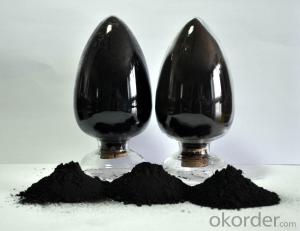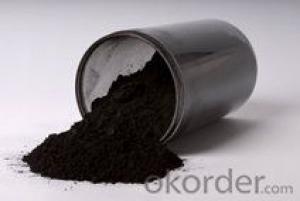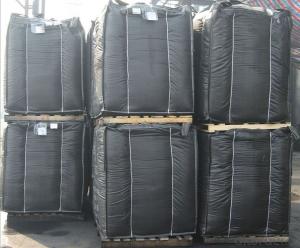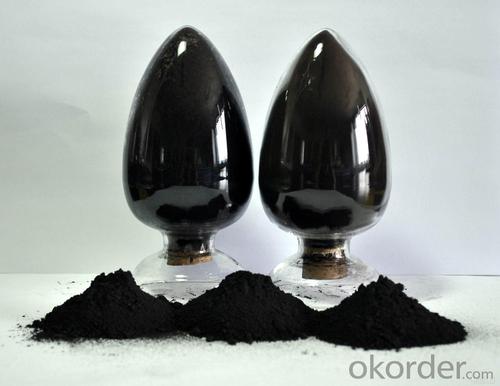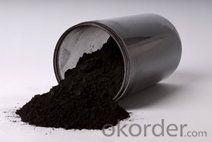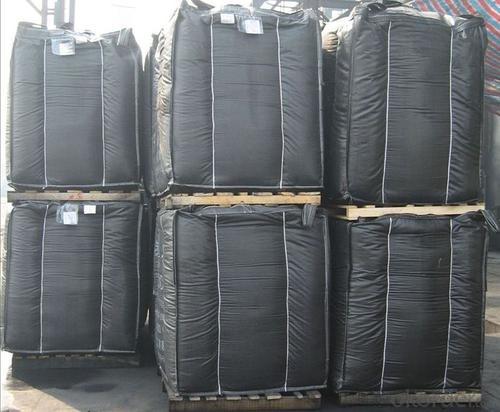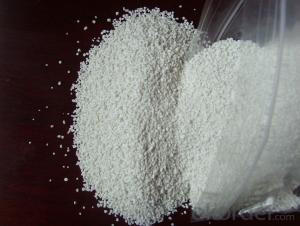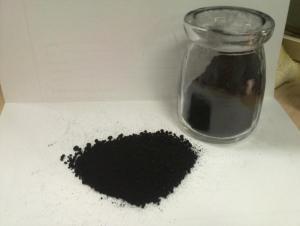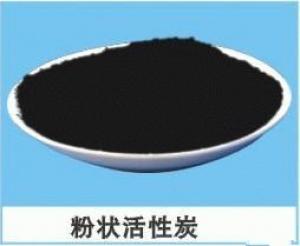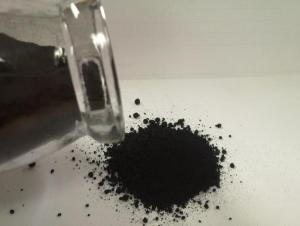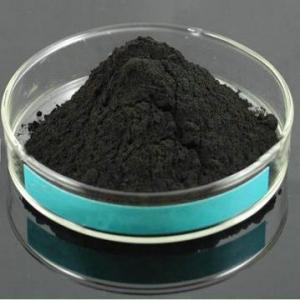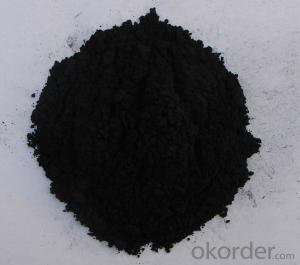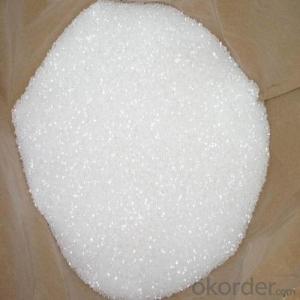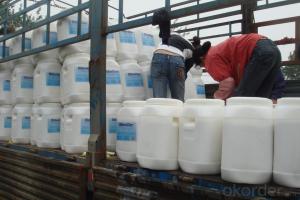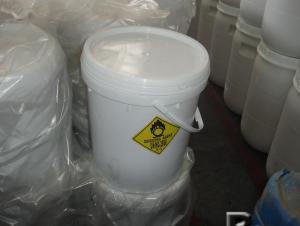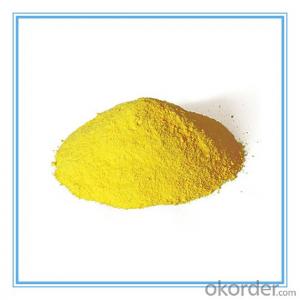Carbon Black Acetylene Black Powder
- Loading Port:
- Tianjin
- Payment Terms:
- TT OR LC
- Min Order Qty:
- -
- Supply Capability:
- 10000MT m.t./month
OKorder Service Pledge
OKorder Financial Service
You Might Also Like
Acetylene black powder
Product Description:
Conductive Carbon Black:
1. Usage : conductive rubber, plastic, radio conductive elements etc.;
2.Product Status: Black granular;
3.Standard: ISO 9001:2000
Suggest for Use:
This product has the low resistance or high resistance performance characteristics, can gift products conductive or anti-static function. Its characteristic is small particle size, specific surface area is large and rough, the structure is high, the surface clean (compounds less), etc.
TDS of the Acetylene black: (Standard:GB/T3782-06)
Items | Unit | index |
Dubigeon(cm3/g) | cm3/g | 41 |
Resistivity(Ω·m)≤ | Ω·m | ≤2.5 |
PH |
| 7.5 |
purity(%)≥ | % | ≥99 |
Oil Absorption(ml/100g) | ml/100g | 360 |
Iodine value(㎡/g) | (㎡/g) | 320 |
Heating loss%≤ | % | ≤0.2 |
Ash %≤ | % | ≤0.17 |
Semolina %≤ | % | ≤0.01 |
Hydrochloric acid to absorb ml/g≥ | ml/g | 4.5 |
Safety:
As a matter of good industrial hygiene, gloves and safety glasses with side shields or better eye protection should be worn when handing Carbon Black , For more information, refer to the MSDS.
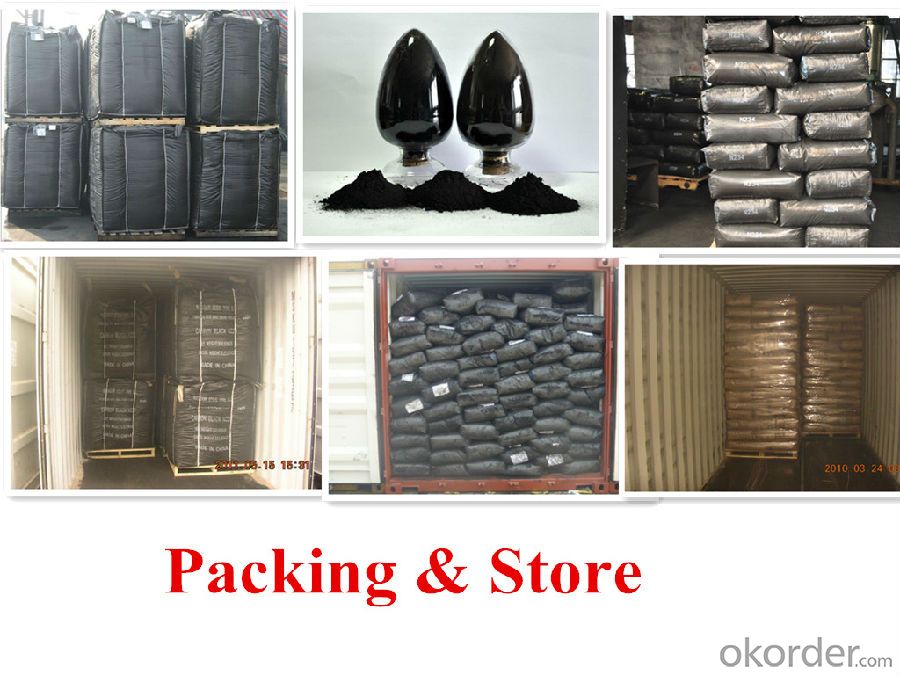


- Q: A biological catalyst or a chemical reaction facilitator is know as a/an?
- I was always taught that it was something best learned by putting forth a bit of effort, reading a bit and embedding the info in your brain so you will remember it always. Just me I guess.
- Q: On the issue of chemical balance and catalyst
- The catalyst also changes the forward and reverse reaction rate.
- Q: Pls help me define a catalyst.?
- A substance which speeds up or slows down a reaction without taking part in it.
- Q: What is the maximum impact of the chemical reaction rate? Such as catalyst, temperature, concentration. If you can, you can row order.
- The catalyst certainly affects the most
- Q: How does catalyst aid a chemical reaction?
- A catalyst works by providing an alternative reaction pathway to the reaction product. The rate of the reaction is increased as this alternative route has a lower activation energy than the reaction route not mediated by the catalyst. Catalysts generally react with one or more reactants to form an intermediate that subsequently give the final reaction product, in the process regenerating the catalyst. The following is a typical reaction scheme, where C represents the catalyst, X and Y are reactants, and Z is the product of the reaction of X and Y: X + C → XC (1) Y + XC → XYC (2) XYC → CZ (3) CZ → C + Z (4) Although the catalyst is consumed by reaction 1, it is subsequently produced by reaction 4, so for the overall reaction: X + Y → Z As a catalyst is regenerated in a reaction, often only small amounts are needed to increase the rate of the reaction.
- Q: Please make it simple because I need it for school and please give to examples for the second part Thanx :D
- A catalyst is a substance that speeds up the rate of a chemical reaction with itself being chemically unchanged at the end of the reaction. They are useful as they help to lower the minimum amount of energy needed ( also known as activation energy) to start the reaction. Hence, by lowering the activation energy of the reaction, they help to speed up the rate of reaction. For example, in the Haber process for the manufacture of ammonia, the catalyst iron is added to speed up the rate of reaction between hydrogen gas and nitrogen gas. Otherwise, the reaction would have proceeded much more slowly. Another example is the catalyst nickel used in the manufacture of margarine and vanadium (V) oxide for manufacturing sulfuric acid. As catalyst remain chemically unchanged after a reaction, they can be reused again and hence, they are required in minute amounts. An example is the washing powder used in washing clothes, they help to remove food stains by digesting the proteins in food. They can be reused after each reaction and hence, you do not need to add in the whole packet of washing powder but only a few spoonful.
- Q: how does the amount of a catalyst affect reaction rate?
- A catalyst is actually a necessary part of the reaction. The catalyst is different on in that the catalyst returns to its original state when the catalyzed reaction completes. But that means that for each atom or molecule that goes through this reaction, there must be an atom or molecule of the catalyst to combine with. You could think of the catalyst as the buses that carry the reactants to their goal. The more buses, the faster the reactants reach their goal, but at the end, all the buses are empty, just like they started.
- Q: Why extract the genome, the digestion is always not cut
- The process of metabolism in the body contains many complex and regular material metabolism and energy changes.Green plants and certain bacteria use solar energy, water, CO2 and inorganic salts and other simple substances, after a series of changes, the synthesis of complex sugar, Fat, protein and other macromolecules, and animals and the use of these plants in the material, and through the complex decomposition and synthesis, the reaction into their own part of the need to grow, breeding, etc. In the laboratory, complex The synthesis and decomposition of organic matter must be carried out under severe conditions such as high temperature, high pressure, strong acid and alkali, such as starch and protein hydrolysis, and some reactions are difficult to carry out in vitro, such as protein synthesis, but in biological conditions Mild (370C or so, near neutral pH), these reactions can be carried out smoothly and quickly.For example, animals eat meat in the digestive tract only a few hours will be completely digested and decomposed; bacteria in the appropriate conditions, Twenty minutes to proliferate generation, in this short twenty minutes, the synthesis of new cells within the need for all the complex substances, etc., what is the reason? This makes the chemical reaction in the body easier And the root cause of rapid progress is the prevalence of a catalytic role in the body of the protein - enzyme.
- Q: Does the nature and quality of the catalyst itself change before and after the chemical reaction?
- A catalyst will induce a chemical reaction to change, leaving the chemical reaction faster or less
- Q: give an example of how a catalysts speeds up the rate of reaction?? thank you!!?
- Catalysts speed up a reaction, but at the end of it, it's chemically unchanged. You usually have the same mass at the end of the reaction. For example.. Consider the decomposition of Hydrogen Peroxide: 2H2O2 -2H2O + O2 I hope you got how to represent it =D So.. This reaction is very slow. You can try it out in the lab. So when we add a catalyst, the reaction speeds up. The catalyst used here is MnO2.. Manganese dioxide. Well.. The Enzymes in our body are also Catalysts. They speed up the Biological Reactions taking place inside out body. I hope this answers your question. :) Cheers
Send your message to us
Carbon Black Acetylene Black Powder
- Loading Port:
- Tianjin
- Payment Terms:
- TT OR LC
- Min Order Qty:
- -
- Supply Capability:
- 10000MT m.t./month
OKorder Service Pledge
OKorder Financial Service
Similar products
Hot products
Hot Searches
Related keywords
